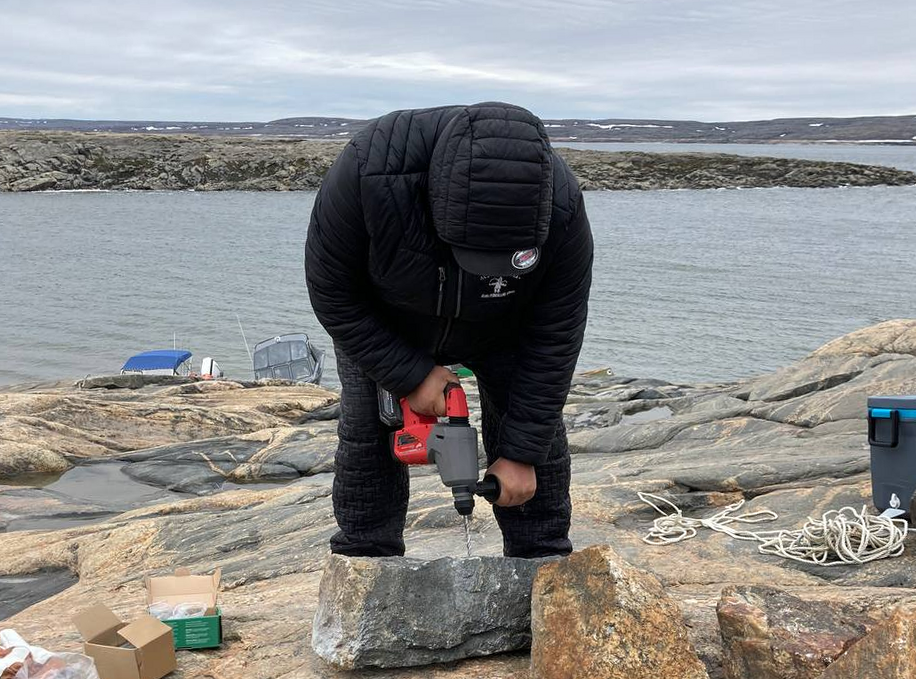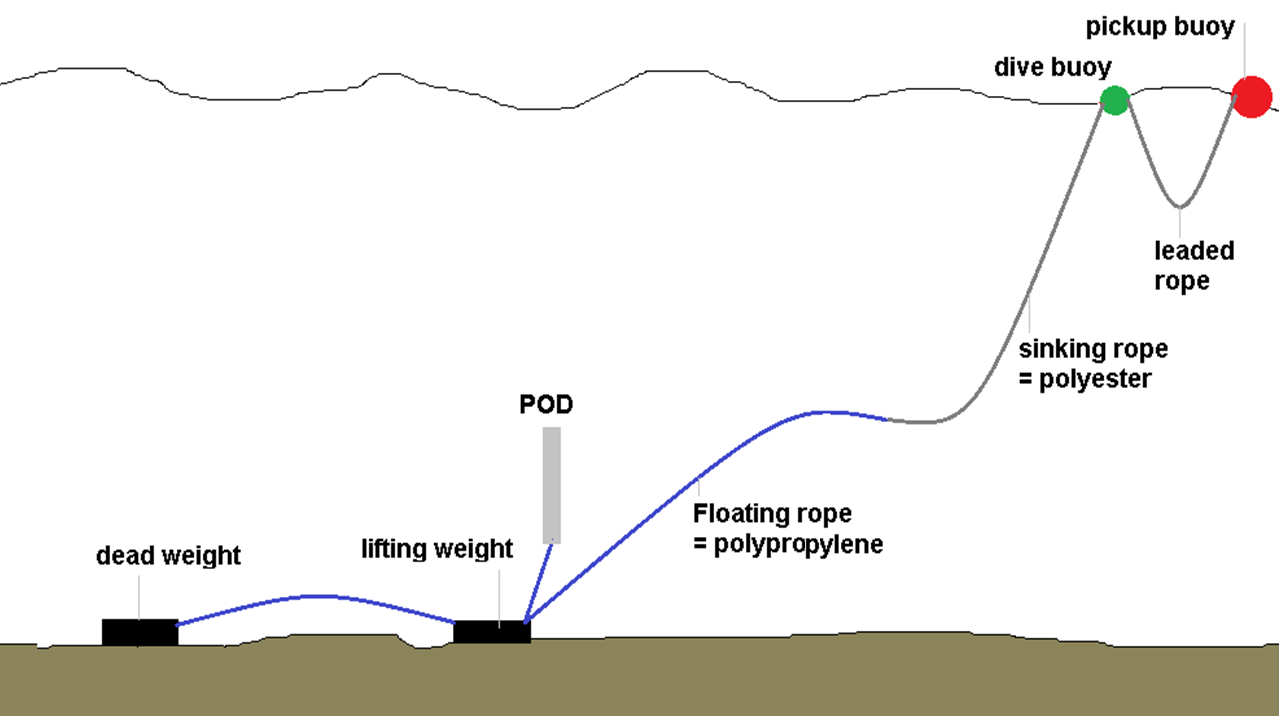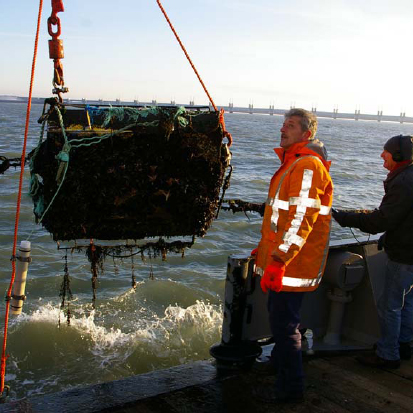
Deployment overview - sea safety
Deployment and retrieval of PODs is generally the biggest challenge in a project.
Deployment of moorings requires very careful thought before going to sea:
- A line tangling with a person on the way out can kill if the person goes overboard.
- Movement of the boat relative to the mooring can create massive forces, even capsizing small boats.
- Plan for loss of control of a mooring when you retrieve it – make sure you can let it go without anyone or thing getting caught.
- Lines breaking under tension are dangerous – no one should be in the line of danger.
- Keep a sharp knife instantly accessible to cut the mooring rope.
These risks apply to many fisheries and 1 & 2 above regularly cause deaths in UK fisheries.
Acoustic release moorings with small anchors reduce all of these risks.
Recovering lost PODs
Write your contact details on the outside of the POD using indelible ink. Place a label inside the POD as well.
If you prefer not to write your contact details on the POD, the address of our contact web site, www.phonehome.org.uk is embossed in the lid. This is a simple web site that will allow someone who finds a POD to contact us so that we, in turn, can contact you to arrange its return. Over 150 PODs have been recovered using this method.
Where should PODs be moored?
Any position between 2 metres above the sea bed and 5 metres below the surface is possibly good. Relevant factors include:
- Heavy snapping shrimp noise favours moving away from the bottom, moving to a different place, or using low sensitivity settings.
- Sand in suspension during tidal currents may favour a near-surface position.
- Fast current sites are very difficult as they are very noisy and flow around the POD causes noise and stress on the mooring. A ‘float through’ technique has been developed at SAMS.
- Moorings within trawling zones are at risk, but there may be wrecks or reefs that are avoided by trawlers and deployments on the edges of these sites may be safer.
- Boat navigation tracks can be excessively noisy with boat sonars.
- Static fishing gear is often a good location.
- Piers and pilings: PODs can be fixed close to these. The echoes are not usually as big a problem as you might expect.
- Very shallow water: it is OK for the POD to be exposed at low tide and lying flat if that is unavoidable.
- Beaked whale studies can be done from 100m deep, but deeper may be better as the animals rarely echo-locate at less than 400m depth.
- Below 100m: standard POD plastic housings may not be reliable. An anodised aluminium housing is available (the DeepF-POD) that goes to 2km.
- Orientation: PODs show lower sensitivity along the long axis in the direction of the lid. They are 0.7kg buoyant in use, but in fast currents this is not enough to hold them up.
- Towing: porpoises react strongly to boats in quiet areas and this makes the results of towed acoustics unpredictable, but these designs may help you do it more successfully.
A basic elastic mooring

